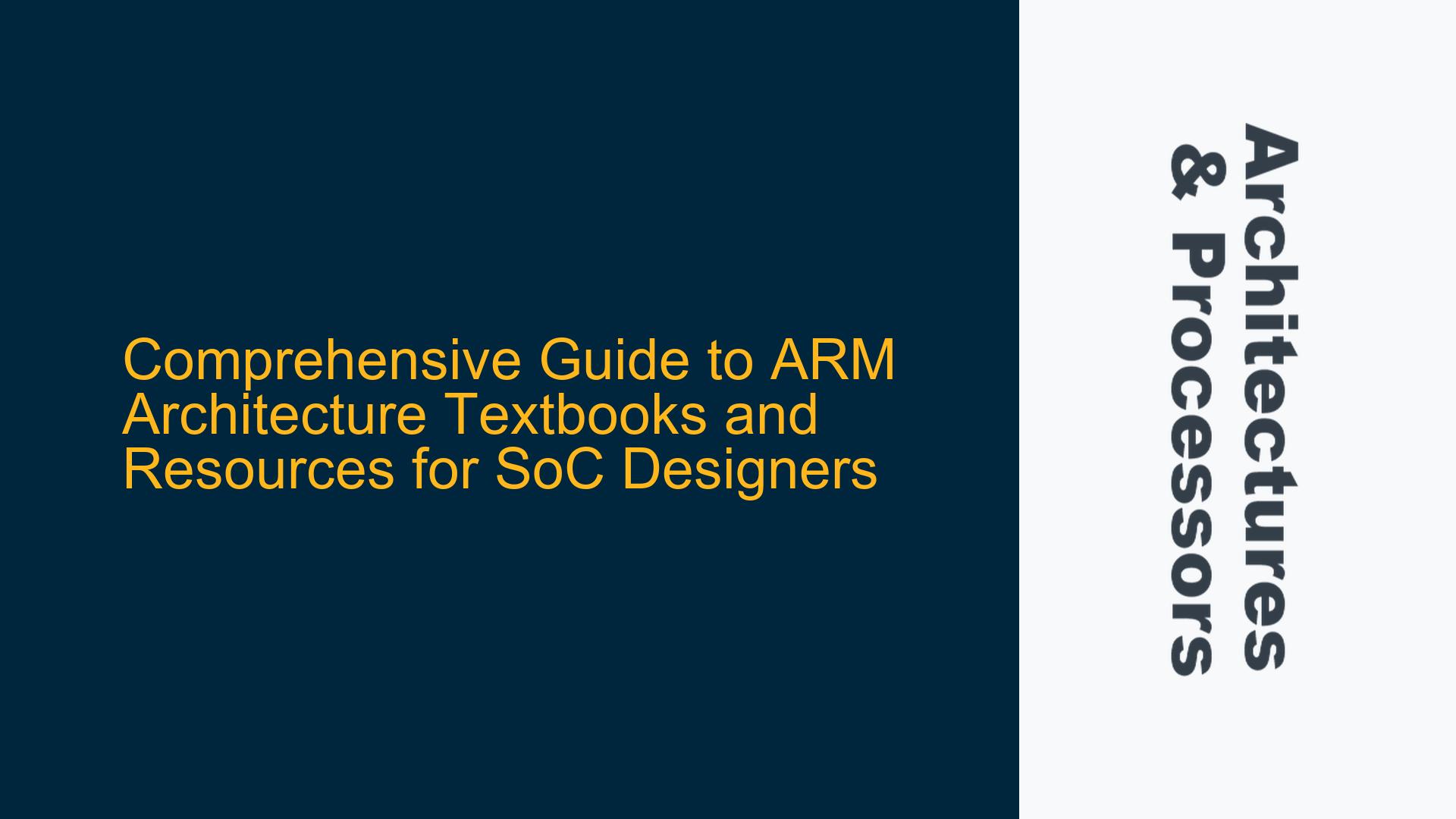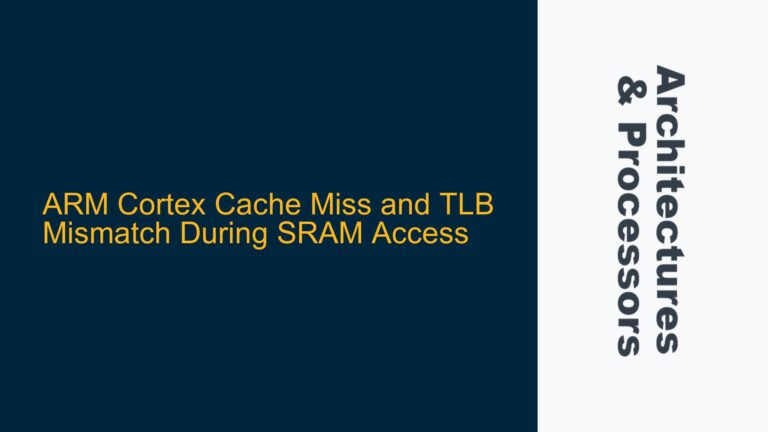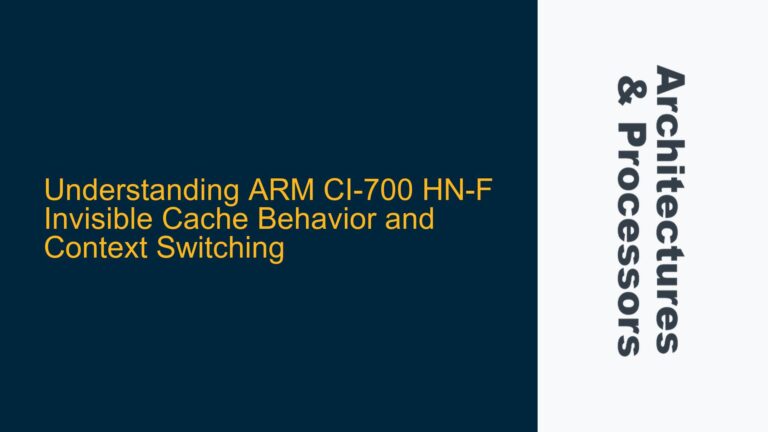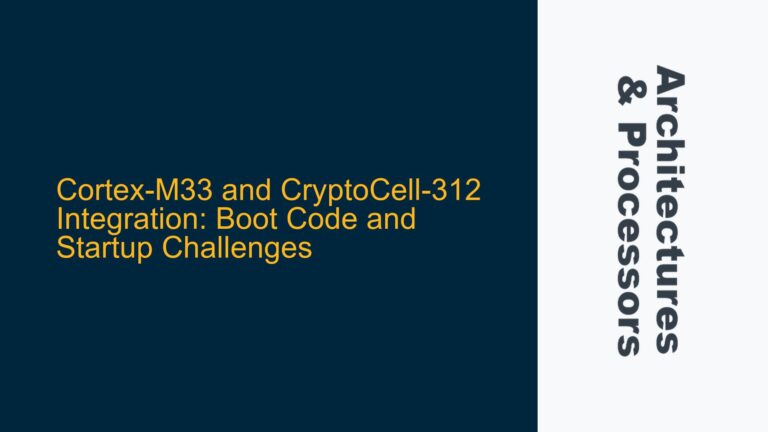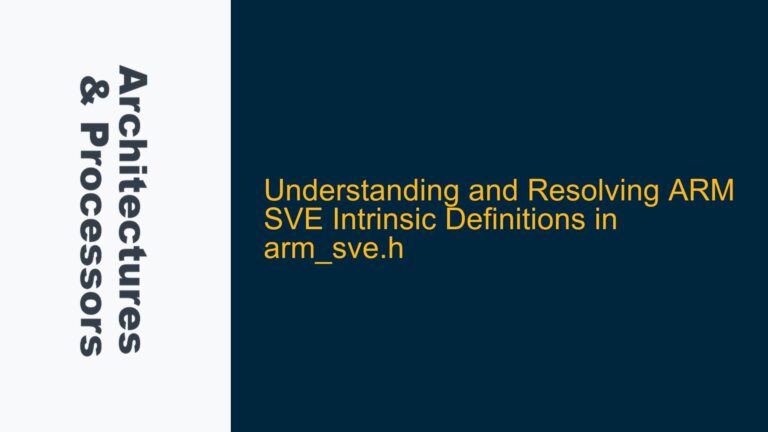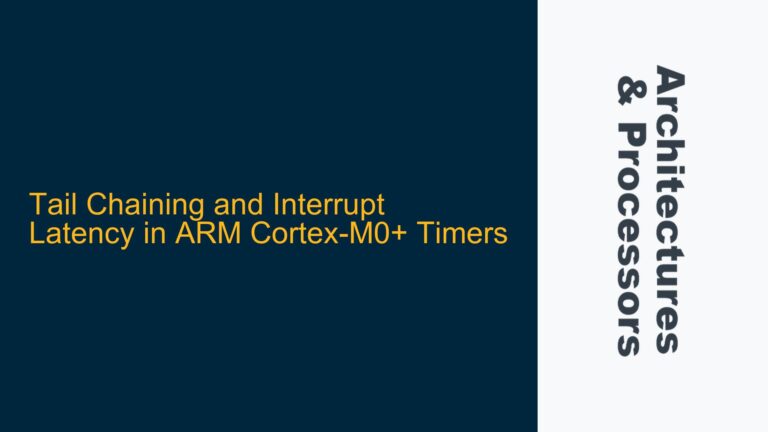ARM Cortex Series and AMBA Bus Architecture Overview Requirements
The need for a comprehensive textbook or resource that covers the ARM Cortex series (M, R, A) and AMBA bus architectures (AHB, AXI, APB) is critical for SoC designers and verification engineers. Such a resource should provide a detailed overview of the ARM architecture, including block diagrams, internal bus structures, memory hierarchies, and interrupt controllers. It should also address performance aspects, key differences between architectures, and integration of ARM IP cores into SoCs. The ideal resource would bridge the gap between high-level overviews and low-level implementation details, enabling engineers to design and verify ARM-based systems effectively.
The ARM Cortex series spans multiple architectures, each tailored for specific use cases. Cortex-M cores are optimized for microcontroller applications, Cortex-R cores for real-time systems, and Cortex-A cores for application processors. Each architecture has unique features, such as the memory protection unit (MPU) in Cortex-M, the dual-core lockstep in Cortex-R, and the advanced SIMD and virtualization support in Cortex-A. Understanding these differences is essential for selecting the right core for a given application and optimizing the system design.
The AMBA bus protocols (AHB, AXI, APB) are integral to ARM-based SoCs, providing the communication backbone between cores, memories, and peripherals. AHB is a high-performance bus suitable for high-speed transfers, AXI is a more advanced protocol supporting multiple outstanding transactions and out-of-order completion, and APB is a simpler bus for low-power peripherals. A detailed understanding of these protocols is necessary for designing efficient bus fabrics and ensuring compliance with ARM’s integration guidelines.
Lack of Unified Resources Covering ARM Cortex and AMBA Architectures
Currently, there is no single textbook that comprehensively covers the ARM Cortex series and AMBA bus architectures. Existing resources tend to focus on specific architectures or protocols, leaving gaps in knowledge for engineers working on complex SoCs. For example, the "ARM Cortex-A Series Programmer’s Guide for ARMv8-A" provides an in-depth look at the Cortex-A architecture but does not cover Cortex-M or Cortex-R cores. Similarly, "The Definitive Guide to ARM® Cortex®-M3 and Cortex®-M4 Processors" focuses on Cortex-M cores but does not address Cortex-A or AMBA protocols in detail.
The absence of a unified resource creates challenges for engineers who need to design and verify systems that integrate multiple ARM cores and AMBA protocols. Without a clear understanding of how different architectures and protocols interact, engineers may encounter issues such as bus contention, cache coherency problems, and interrupt latency. These issues can lead to suboptimal system performance and increased verification effort.
To address this gap, engineers often rely on a combination of ARM Technical Reference Manuals (TRMs), AMBA specifications, and third-party textbooks. While these resources provide valuable information, they require significant effort to cross-reference and synthesize into a coherent understanding of the system. A unified resource that consolidates this information would save time and reduce the risk of design errors.
Recommended Resources and Strategies for ARM SoC Design and Verification
Given the lack of a single comprehensive resource, engineers should adopt a multi-faceted approach to learning and applying ARM architecture and AMBA protocols. The following resources and strategies are recommended:
-
ARM Cortex-A Series Programmer’s Guide for ARMv8-A: This guide provides a detailed overview of the Cortex-A architecture, including memory management, virtualization, and advanced SIMD. It is an essential resource for engineers working on application processors.
-
The Definitive Guide to ARM® Cortex®-M3 and Cortex®-M4 Processors: This book covers the Cortex-M architecture in depth, including the NVIC, MPU, and low-power features. It is particularly useful for engineers designing microcontroller-based systems.
-
AMBA Specifications: The official AMBA specifications (AHB, AXI, APB) provide the definitive reference for bus protocols. Engineers should familiarize themselves with these documents to ensure compliance with ARM’s integration guidelines.
-
ARM Technical Reference Manuals (TRMs): TRMs for specific ARM cores provide detailed information on register maps, instruction sets, and performance characteristics. These manuals are essential for low-level design and verification.
-
Online Courses and Tutorials: Platforms like ARM’s official website and Coursera offer courses on ARM architecture and AMBA protocols. These courses provide structured learning paths and practical examples.
-
Community Forums and Discussion Groups: Engaging with the ARM community through forums and discussion groups can provide valuable insights and practical advice from experienced engineers.
In addition to these resources, engineers should develop a systematic approach to learning and applying ARM architecture and AMBA protocols. This approach should include:
-
Systematic Analysis of Design Specifications: Engineers should carefully analyze the design specifications to identify the key requirements and constraints. This analysis should include a review of the target application, performance goals, and power budget.
-
Deep Understanding of ARM TRM Documentation: Engineers should thoroughly study the TRMs for the ARM cores and AMBA protocols used in the design. This understanding is critical for identifying potential issues and optimizing the system design.
-
Practical Experience with Synthesis Constraints: Engineers should gain hands-on experience with synthesis constraints and timing analysis. This experience is essential for ensuring that the design meets performance and power requirements.
-
Comprehensive Knowledge of Verification Corner Cases: Engineers should develop a comprehensive understanding of verification corner cases, including bus contention, cache coherency, and interrupt latency. This knowledge is critical for designing effective verification strategies and ensuring the reliability of the system.
By combining these resources and strategies, engineers can develop a deep understanding of ARM architecture and AMBA protocols, enabling them to design and verify complex ARM-based SoCs effectively. While the lack of a single comprehensive resource presents challenges, a multi-faceted approach can bridge the gap and provide the knowledge needed to succeed in ARM SoC design and verification.
